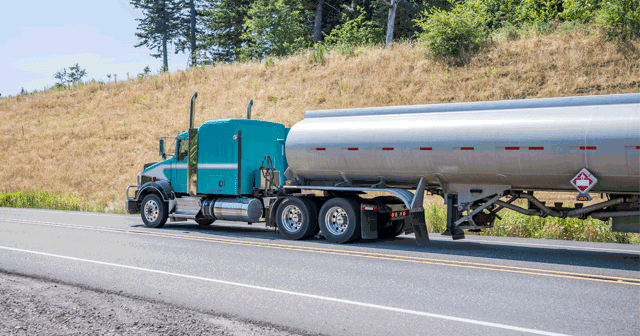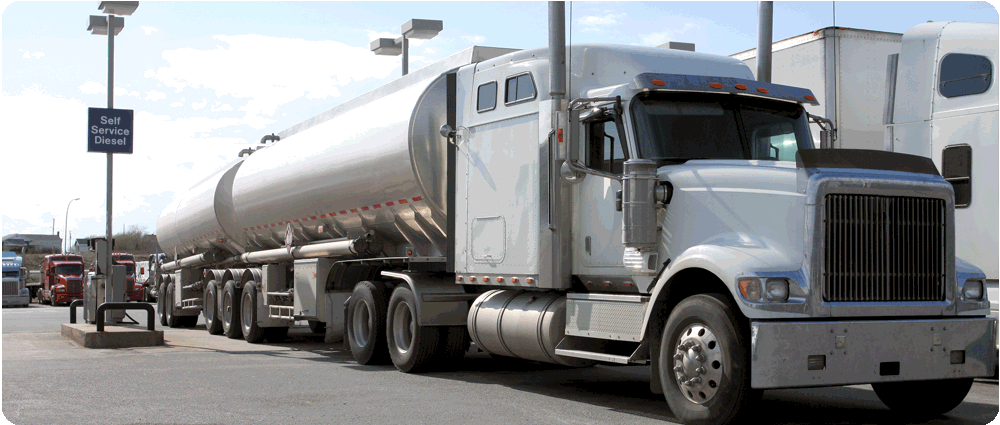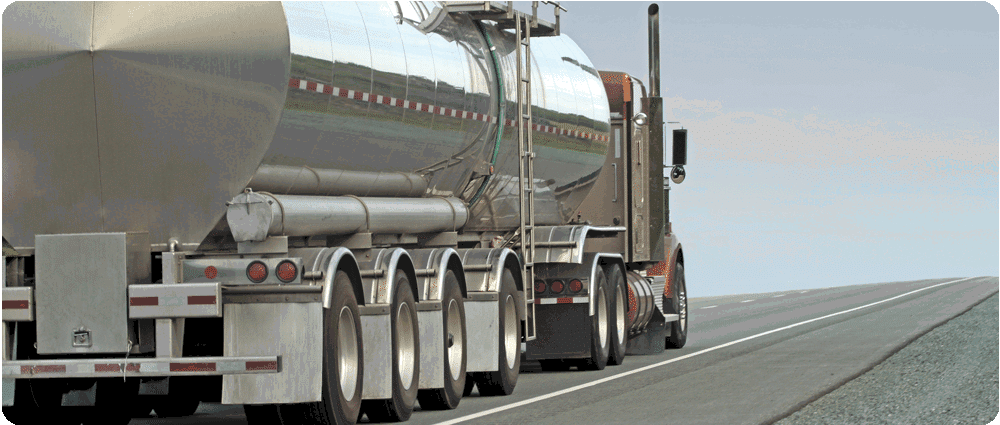Underappreciated Last Mile in Refined Fuels Supply Chain

Fuel supply logistics have been in focus as we begin the summer driving season, accentuating a chronic shortage of drivers as the collision of growing gasoline demand and driver retirements during the pandemic threatens timely deliveries from wholesale terminals to retail outlets.
In this review, we’ll offer history, personal account, and data-driven explanations to provide perspective for an often-invisible link that connects the commercial oil industry to the retail market. We’ll also shine a light on the regulatory burden that can inhibit supply chain efficiency, and the costs endured by fuel distributors.
Winter Storm Uri in February and the Colonial Pipeline shutdown by a cyberattack in May stressed fuel distributors and drivers, keeping fuel haulers on the road, or waiting in long lines at terminals for hours beyond what would make a routine day. Drivers were putting in 12-hour and 14-hour days, sometimes sitting in lines waiting to lift fuel for three hours or more. Some fuel haulers were adding more than 100 miles to their roundtrip to secure fuel at alternate terminals to deliver to depleted retail outlets.

Like 2020, 2021 has been anything but what one would call normal. Winter Storm Uri and the ransomware-forced Colonial Pipeline outage highlight a pair of anomalies, and how distributors and fuel haulers responded to those unique challenges. But even before those events, hiding in plain sight was a stressed part of the fuel supply chain that now could lead to longer deliveries from wholesalers to commercial and retail locations. We could even see pockets of supply outages at retail gas stations, potentially causing panic buying as seen in May in response to the Colonial Pipeline shutdown. These are real threats, and they cause economic harm.
Kenny Vieth, president and senior analyst with ACT Research, said, “Driver shortages are as old as the trucking industry,” but thinks the current shortage in overall truck drivers began around June or July 2020. He points to the roughly 100,000 drivers that “were sent home” in April and May last year amid the lockdowns in triggering the current shortage. Citing Bureau of Labor Statistics data, Vieth said there were 1.52 million truck drivers pre-pandemic and 1.48 million in April 2021, which suggests generous unemployment benefits cut the number of drivers by 40,000.
The pool of available drivers “is likely double the BLS figures,” said Vieth, noting the agency does not include drivers for private fleets such as Walmart. “More importantly, the shutdown and social distancing protocols constrained the supply of new drivers coming out of driver schools and made [commercial driver’s] licensing more difficult,” he said, with state motor vehicle bureaus closed because of the pandemic.
The plunge in gasoline demand during 2020 cut fuel deliveries. “We lost a lot of business last year,” said a truck terminal manager in the Rockies, and—with the decline in business—also lost drivers. Now, with business booming, “I can’t find a driver.”
“COVID just tipped the needle to the edge,” said Grier Bailey, executive director at Colorado-Wyoming Petroleum Marketers Association.
“Qualified drivers are gold,” said a distributor in Texas, adding that the current tightness in tanker drivers cropped up earlier this year, with managers at times moving from the desk to the truck cab to plug the shortage. He listed the necessary credentials a driver must have to drive a tanker with fuel.

To haul fuel, a driver needs two endorsements on their state-issued CDL: a tanker truck endorsement and a hazardous materials (hazmat) endorsement. Securing a hazmat endorsement requires interaction with both the state and federal governments, with the Patriot Act of 2001 requiring all applicants to undergo a threat assessment by the Transportation Security Administration (TSA). The applicant must provide proof of U.S. citizenship and be fingerprinted. Once this step is completed, the candidate would need to pass a hazardous materials written exam administered by the state.
Fuel haulers lifting at marine terminals also need to secure a Transportation Worker Identification Credential, which is required by the Maritime Transportation Security Act. The TSA again conducts a background check to determine eligibility, with candidates required to have a clean record. Cathy Landry with the International Liquid Terminals Association noted in May how the Colonial Pipeline shutdown prompted some drivers to be dispatched to lift a load at a marine terminal yet didn’t have a TWIC card. The Coast Guard, on a case-by-case basis, did address the issue, but the additional security added to delays.
Inland terminals and refineries have their rules too, requiring a driver to be trained at their facility before granting certification cards to allow access to the loading racks. The training could take a few days, with the driver idled as they learn the rules. And once secured, dispatchers need to ensure the driver lifts from the terminal during the next 90 days, or else will need to be recertified.
“To be a trucker is to be regulated,” said Vieth, noting drivers are subject to maximum hours of service regulations and drug testing.
Last year’s nationalization of the Federal Motor Carrier Safety Administration’s Drug and Alcohol Clearinghouse that require a “return-to-duty” process for violators “has made it materially more difficult for those caught to get/retain trucking jobs,” said Vieth.
While modified in 2020, short-haul trips have a maximum of 14-hour days and 150 air mile radius, with a minimum 10-hour break between shifts. Bailey said the HOS rules are a big disadvantage for fuel haulers in less populated regions of the country like Wyoming and Montana, where fuel terminals and customers are farther apart. He said sitting in a terminal yard for three hours shouldn’t count against the driver’s HOS.
There’s a need for “a comprehensive look at regulations,” said Bailey.
In testimony before the Senate Commerce, Science and Transportation Committee on May 11, American Trucking Associations President and CEO Chris Spears said the industry faces a shortfall of nearly 61,000 drivers and will need to hire roughly 1.1 million new drivers over the next decade to keep pace with the economy’s increased freight demands.
The older age of drivers means the shortage is more daunting than those figures suggest. An April 28 letter to Meera Joshi, FMCSA acting administrator, the National Association of Convenience Stores, National Association of Truckstop Operators, Energy Marketers of America, and Society of Independent Gasoline Marketers of America noted that more than half of all truckers are over 45, with 23% over 55. The associations added that the average age of a new driver being trained is 35 years old, due in large part to the 21-year age requirement in moving freight. Most fuel distributors want a driver to have a couple of years of truck driving experience before graduating to hauling fuel, with some setting the minimum age at 25 because of insurance costs.
Rich Jennings, president at Regional Supplemental Services, a New York-based company providing temporary staffing for CDL drivers and warehouse workers nationwide, said age restrictions should be dropped. He also advocates for work visas to help plug the shortfall, adding that he’s “stunned by the lack of awareness about these good-paying jobs.”

Trucking companies of all stripes are increasing pay and offering signing bonuses, although this can lead to higher turnover as a driver jumps from one company to another. Fuel distributors are also competing with freight distributors and “no touch delivery,” meaning the driver doesn’t need to load. There’s competition for drivers from the construction industry which is also contending with a worker shortage.
“It was not too long ago, if you were a fuel hauler, you were considered an elite driver, a shining star! Many other drivers would look up to and aspire to become a fuel carrier, both for their skill, their pay, and their dedication,” penned John Hamel, president at J&S Transport Co., Inc. earlier this year for the Energy Marketers Association of New England.
This is no longer true, said Hamel, with fuel distributors squeezed by rising costs that undermine their previous advantage in providing the best pay packages. Now, a driver has more options as compensation packages have improved for all drivers without the responsibility of moving a hazardous load.
Hamel said insurance renewal rates have trended 20% to 30% higher annually over the past three to four years, with Vieth indicating insurance accounts for roughly 5% to 6% of operating costs for the industry compared with about 4% 10 years ago. “Nuclear verdicts,” in which juries award huge sums for crashes that are paid out by insurance companies are a driving factor in lifting premiums.
“There is no small part of the industry who are one accident away from insolvency,” said Vieth.
For fuel haulers, terminal operators relatively recently introduced Waivers of Subrogation and additional language in their carrier contracts, adding further to insurance costs. The margin pressure is incredible, jeopardizing the viability of some businesses.
“In New England alone, no less than five well known carriers have either gone out of business, merged, or just exited the gasoline transport division of their companies, the latter relied on other divisions carrying the fuel transport division,” said Hamel. “This is unsustainable.”
These realities illustrate why we could see gas stations with no fuel during periods of peak demand, and why retail fuel prices will trend higher.











 Comprehensive weather insights help safeguard your operations and drive confident decisions to make everyday mining operations as safe and efficient as possible.
Comprehensive weather insights help safeguard your operations and drive confident decisions to make everyday mining operations as safe and efficient as possible. Learn how to optimize operations with credible weather and environmental intelligence. From aviation safety to environmental compliance, our comprehensive suite of solutions delivers real-time insights, advanced forecasting, and precise monitoring capabilities.
Learn how to optimize operations with credible weather and environmental intelligence. From aviation safety to environmental compliance, our comprehensive suite of solutions delivers real-time insights, advanced forecasting, and precise monitoring capabilities. 

